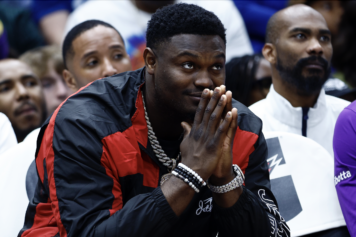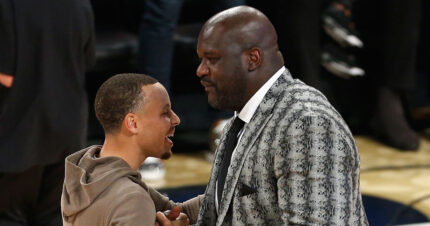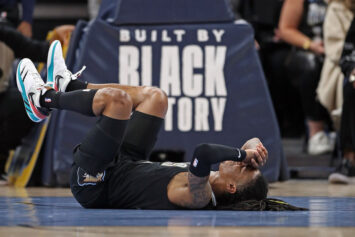The Ed O’Bannon trial is another example of the overdue reform needed in high revenue collegiate sports.
This appears to be the offseason in which reform in high revenue collegiate sports, such as men’s college basketball and football, has reached critical mass thanks to Northwestern’s player’s union vote, Jeffrey Kessler’s case against the NCAA and highlighted by Ed O’Bannon’s class action antitrust lawsuit.
However, this isn’t the first time the justice system has had an opportunity to declaw the NCAA’s monopoly.
Thirty years ago on June 27, all of this was set in motion. That its anniversary coincided with the 15th and final day of the O’Bannon trial on Friday is even more ominous.
“It set the rules of the game for the N.C.A.A. and how it should be examined as a cartel,” O’Bannon’s lawyer William Isaacson told the New York Times recently.
Once a cartel, always a cartel as NCAA attorney Greg Curtner also says.
In 1984, the following words ripped out of NCAA expert and University of California-Berkeley professor Daniel Rubinfeld’s textbook would have been applicable to the college athletic governing body’s autocracy over television rights as well.
“The cartel organization is the National Collegiate Athletic Association (NCAA),” Rubinfeld’s textbook reads. “The NCAA restricts competition in a number of important ways. To reduce bargaining power by student-athletes, the NCAA creates and enforces rules regarding eligibility and terms of compensation.”
The conference realignment, which sent the NCAA’s power schools adrift, was all about colleges getting their mitts around ballooning television revenues. The arms race began with the SEC’s 15-year, $2.25 billion deal with ESPN, not including the $825 million, 15-year contract for first tier television rights with CBS.
However, Texas’ 20-year, $300 million Longhorn Network deal was the megaton bomb that shook the college football universe to its core and kick started the tectonic shift.
In 2012, the ACC inked a 15-year, $3.6 billion deal and a few months afterwards, Louisville jumped from the Big East’s sinkhole.
Then in May of 2013, the SEC and ESPN extended their contract 10 years to insert the creation of a brand new SEC Network.
After the 2012-13 fiscal year, the SEC distributed $289.4 million to its members, which amounted to an average of $20.7 million per school, $163 million of which was derived from television production.
Those numbers wouldn’t be possible without the Supreme Court’s ruling in favor of the plaintiffs in NCAA v. Board of Regents of the University of Oklahoma.
The O’Bannon case began with a video game avatar that brought the NCAA’s perpetual use of its student-athletes’ likeness into focus and has mushroomed into the profiting off of those NILs (names, images and likenesses) in television broadcasts.
Beginning in the late ‘50s, the NCAA had rights to negotiate television rights for every school under its omnipotent umbrella. By the time the University of Oklahoma and Georgia’s Board of Regents’ lawsuit went to trial, ABC held the rights to all college football broadcasts. It was later found that the NCAA Television Program Czar had been given authority to establish how much teams were compensated for their national television appearances.
Once the NCAA member schools became dissatisfied with the state of affairs, the College Football Association was formed and a deal was struck with NBC for a separate television rights deal apart from the NCAA’s overreaching wing , which at the time restricted schools to a maximum of only six television appearances every two seasons.
The NCAA fought this rebellion by threatening to sanction entire athletic programs that participated in the CFA’s NBC contract. From there, the University of Oklahoma and UGA filed suit in the District Court seeking an injunction.
Judge Juan Guerreo Burciaga eventually found that the NCAA engaged in price fixing in an attempt to restrict the number of broadcast games in addition to a judgment which found the NCAA in violation of antitrust laws.
The appellate court and Supreme Court soon upheld Judge Burciaga’s decision.
The benefits weren’t immediately felt as former ABC Sports Vice President Jim Spence recounted telling NCAA Executive Director Walter Byers, “You’re simply watering down the scotch. They gave them more programming, but not more quality to sell.”
For a brief period his prediction was right on the money as the $74 million contract being negotiated by the NCAA in 1984 was replaced by $31 million in revenues with the CFA’s 63 schools, and the price for televisions were sliced by a fourth.
However, within a decade, college football programs were passing the Courvoisier and basking in the suds. Just two weeks after the CFA hustled a $210 million deal out of ABC, Notre Dame flew solo into a five-year $38 million deal with NBC. The landscape had officially been altered.
The Supreme Court’s ruling gave schools autonomy over their own television rights and essentially cleared the path for the explosion of salaries, revenues and exposure of college athletics. However, the players take has remained stagnant despite the 30-years of television revenue inflation.
Aside from USC, which has decided to begin offering four-year guaranteed scholarships, which could be considered a recruiting advantage, most D-I athletes in revenue sports can get cut on a year-by-year basis. In professional football and basketball, that type of action is an inescapable aspect of the at-will employment tight walk.
Here one day, gone tomorrow, without cause.
For collegiate athletes, it’s just an imbalanced scenario. On one side they’re expected to be amateurs and steer clear of monetary benefits that could ruin the NCAA’s purity visage. On the other, they’re prohibited from profiting off their own names.
It’s time the players snatch a piece of the pie that’s been dangled in front of them for the past three decades. The O’Bannon case is the next logical step.
EA Sport settled with 100,000 current and former players for $40 million as a consequence of O’Bannon’s class action suit, but the NCAA remains firm in its stance while individual conferences (aside from Big Ten Commish Jim Delany) are open to change. Amateurism is the next pillar for the legal system to force into imploding onto itself and O’Bannon bought the dynamite. Ironically enough, they may have a three-decade old lawsuit against the NCAA to thank.
What once was old, is new again.



